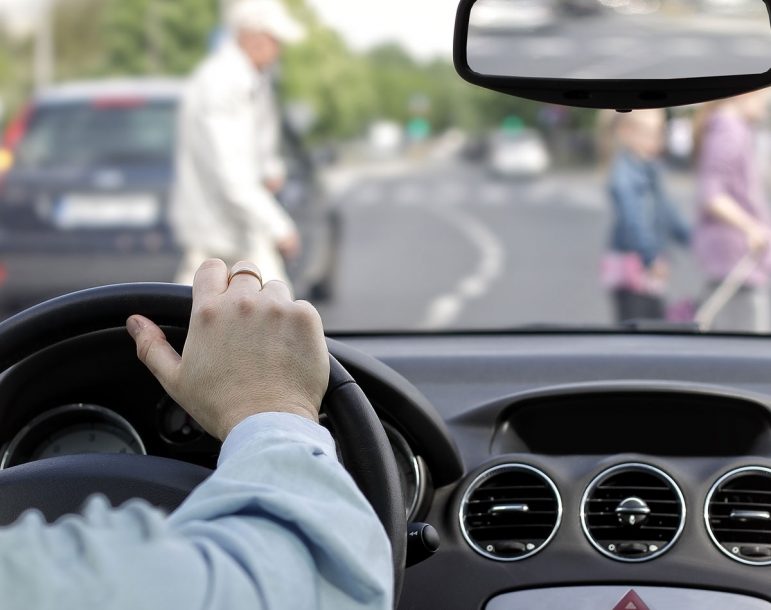Walking is the most basic and ancient form of transportation and a large percentage of people still use walking as their primary way to get where they need to go. However, recent statistics indicate that simply walking across the street is increasingly dangerous.
Research from the National Highway Traffic Safety Administration (NHTSA) reports that about 64,000 pedestrians are injured by vehicles in the U.S. every year. Any impact with a moving vehicle is likely to result in a serious accident, so it’s not surprising that about 5,000 pedestrians die as a result of those encounters each year.
Florida, California, Texas and New York together accumulated approximately 42% of all fatal pedestrian accidents in the United States last year.
The three major factors that contribute to fatal pedestrian accidents in the United States are the following:
- Speed – Speed is the biggest contributing factor to the increase in fatal pedestrian accidents. To prevent this, cities like New York have reduced the speed limit on many of its streets to 25 miles per hour.
- Alcohol – Another significant factor that contributes to the increase of fatal pedestrian accidents is alcohol. Drunk drivers were involved in 15% of accidents that killed pedestrians last year. But the most shocking statistic is that more than 1/3 of those pedestrians were also drunk. In effect, 34% of dead pedestrians had a level higher than .08 of blood-alcohol concentration (BAC), which is the limit to be considered as a drunk driver in many states.
- Distracted drivers / distracted pedestrians – Drivers/pedestrians distracted by devices such as a radio, mobile phone, GPS devices etc. are part of the increasing causes of accidents.
What rights do pedestrians have?
A pedestrian can be defined as anyone who is near or on the street and is standing, walking, jogging, rollerblading, pushing a baby car or doing some standing activity, the opposite of being in a car, on a bicycle, etc.
When pedestrians and vehicles begin to interact on the roads, it is assumed that it is always pedestrians who have the right to cross. This is not always true. Both motorists and pedestrians have rights and responsibilities that they must obey.
Pedestrians usually have the right to cross the marked crossings at intersections, but they are also obliged to obey traffic lights wherever they exist. Pedestrians are also supposed to be on the left side of the road or on the sidewalk.
Unfortunately, many of the pedestrian accidents that occur involve pedestrians who have been hit from behind. Usually, this means that they were walking on the wrong side of the road and often at night.
Pedestrians need to show reasonable prudence, act self-confidently and in a safe manner. This means that they must obey traffic signals, be on the left side of the road as much as possible, and at night they should have lights or wear fluorescent clothes.
What obligations do vehicle drivers have?
While there are bylaws that require pedestrians to obey traffic signs and signals, as well as give way to motorized vehicles, it is also true that there are statutes that specify very clearly that because a car has the right to drive on a road shared by pedestrians, that does not relieve the driver of the vehicle of itsobligation to take reasonable care for their safety.
When a car enters an area where pedestrians are present, the driver has the absolute obligation under the law to allow the pedestrian to pass and allow him to cross the street or do whatever is necessary for the pedestrian to reach his destination safely. Above all, drivers are generally obligated to honk their horns and take all precautions when there are pedestrians on or near the road.
Pedestrian Accidents and Uninsured/Underinsured Motorist Coverage
For victims of a pedestrian accident where the at-fault driver has little or no insurance, the financial impact can be devastating. But, what many Texans don’t know is their own auto insurance policy can save them.
The uninsured/underinsured motorist portion of an auto policy typically pays for injuries caused by an uninsured or underinsured at-fault driver. It covers car accident related injuries even if the victim isn’t in a car when he was hurt. It also protects victims of a hit and run driver.
When UIM and Hit and Run Coverage Applies
A Pedestrian who is injured by an uninsured or underinsured motorist can typically collect money for their damages under their own UIM/Hit and Run policy under the following conditions:
- The injured pedestrian is you, your spouse, your child or another immediate family member who lives at home with you.
- The injured pedestrian is your child who is away at college.
- The driver of the car that hit the pedestrian was at fault for the accident.
- The driver at-fault had no or not enough insurance coverage.
- If it was a hit-and-run, a police report was filed.
Compensation for injuries suffered in a pedestrian accident
If you or someone you know has been injured in a pedestrian accident, you may be entitled to claim significant compensation for:
- Past and future medical expenses
- Loss of salary and past and future income
- Pain and suffering
Another thing you need to know about pedestrian accidents is that while the accident report prepared by law enforcement can mention the pedestrian as the cause of the accident, law enforcement agents do not make the final determination. The determination as to who is at fault for injuries suffered in a pedestrian accident, for the purpose of establishing civil liability, is made by a jury after hearing all the facts from all the witnesses, and not necessarily from the officer or agent of the law who in many cases did not witness the accident.
Regardless of what the accident report says about who is at fault, you will need the assistance of an experienced pedestrian accident attorney to be successful in your claim.
A good pedestrian accident lawyer who has handled many pedestrian accident cases will be able to satisfactorily prove to the insurance company, the defense attorney and/or the jury that you had the right to cross and that the vehicle had to stop.
Conclusion
The law is very clear: drivers have an absolute obligation to yield to any pedestrian crossing their path. It is also clear that pedestrians should use reasonable safety when crossing the street or when interacting with vehicles. Therefore, many claims for pedestrian accidents are analyzed to determine who first entered the street or intersection.
Was it the pedestrian who was there long enough to be seen on the marked road, or was it the vehicle that entered the intersection before the pedestrian stepped out into the lane? Claims for pedestrian accidents almost always require a complex analysis of time and distance and should never be taken by a lawyer who does not handle this type of accident on a regular basis.
If you or a loved one has been injured in a pedestrian accident, you should only hire an experienced pedestrian accident lawyer to help you with your claim and compensation.
Contact P&M Law and our experienced accident lawyers will fight to get you fair compensation for your injuries and losses. Please contact us at 832-844-6428 or text our attorneys directly at 832-438-3012.

